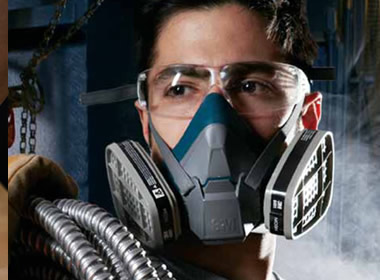
First Aid & CPR/AED, Respiratory Protection
In most facilities, not a day goes by without some type of injury occurring. It can be as minor as a small cut or as serious as a chemical burn. But any injury can be painful and affect an employee’s work performance, as well as their life off the job.
Safety Aspects OSHA training will show employees how to perform basic first aid measures that can often limit the severity of any type of injury or even prevent a death.
Who should take this class?
Emergency response teams, safety personnel, supervisors, foreman and all individuals requiring certification.
What’s covered?
We cover all the basics, plus specialized techniques. Our standard first aid and CPR course meets all OSHA requirements. All of our supplemental training materials are easy to use and understand.
Topics Covered
- Breathing and cardiac emergencies in adults, infants and children
- Cuts and bleeding
- Preventing disease transmission
- Muscle pulls and sprains
- Burns
- Broken bones
- Shock
- Artificial respiration and CPR
- Introduction to AEDs (Automated External Defibrillators)
OSHA Respiratory Protection Training
An estimated 5 million workers are required to wear respirators in 1.3 million workplaces throughout the United States. Respirators protect workers against insufficient oxygen environments, harmful dusts, fogs, smokes, mists, gases, vapors, and sprays.
These hazards may cause cancer, lung impairment, other diseases, or death. Respirators are needed to protect workers from atmospheric hazards, but they will not be effective unless they are properly used and maintained.
Safety Aspects Respirator Training was created to assist employers in complying with OSHA’s Respiratory Standards. Compliance with the OSHA Respiratory Protection Standard could avert hundreds of deaths and thousands of illnesses annually.
Safety Aspects can also provide Fit Tests for employees that are in your Respirator Program.
Topics Covered
This course covers the requirements for the establishment, maintenance, and monitoring of a respiratory protection program.
Upon course completion students will have the ability to identify and describe the elements of a respiratory protection program, the proper selection, use, and inspection of respiratory protection, protection factors, and evaluate compliance with OSHA Standards.
- Respirator protection terminology
- Common types and causes of respiratory hazards
- Potential effects of respiratory hazards
- OSHA Respiratory Protection Standards
- How the respiratory system works
- Good respiratory safety practices
- Respiratory safety equipment
- Fit testing overview
- Equipment maintenance procedures






